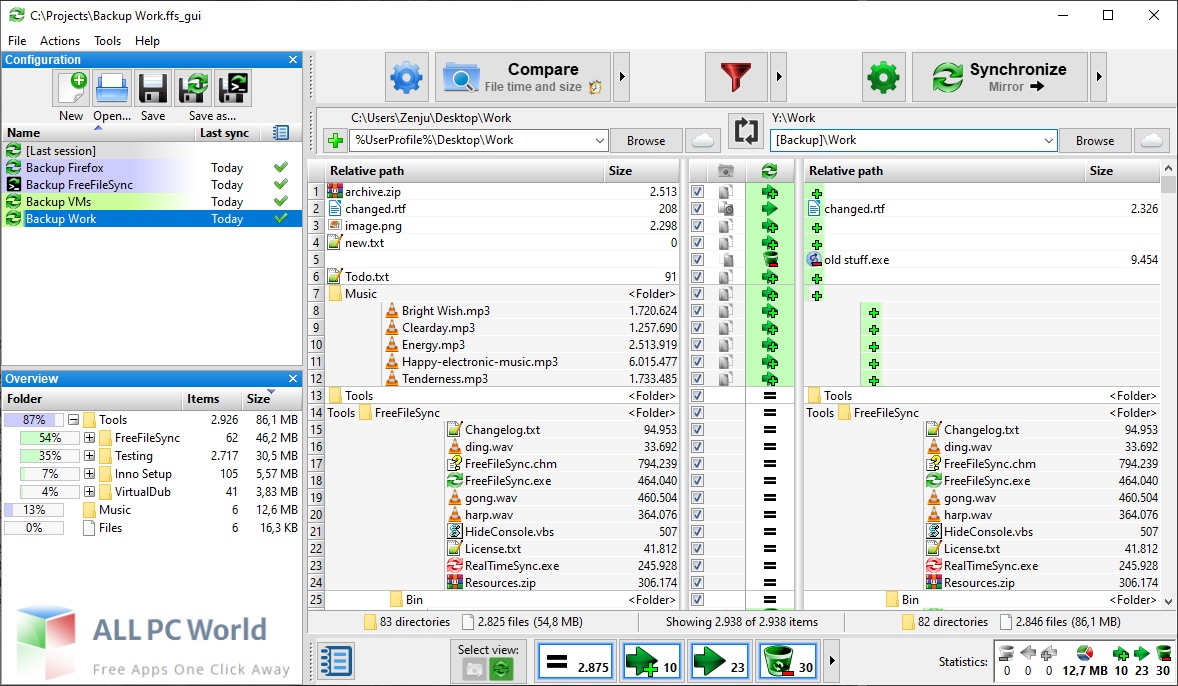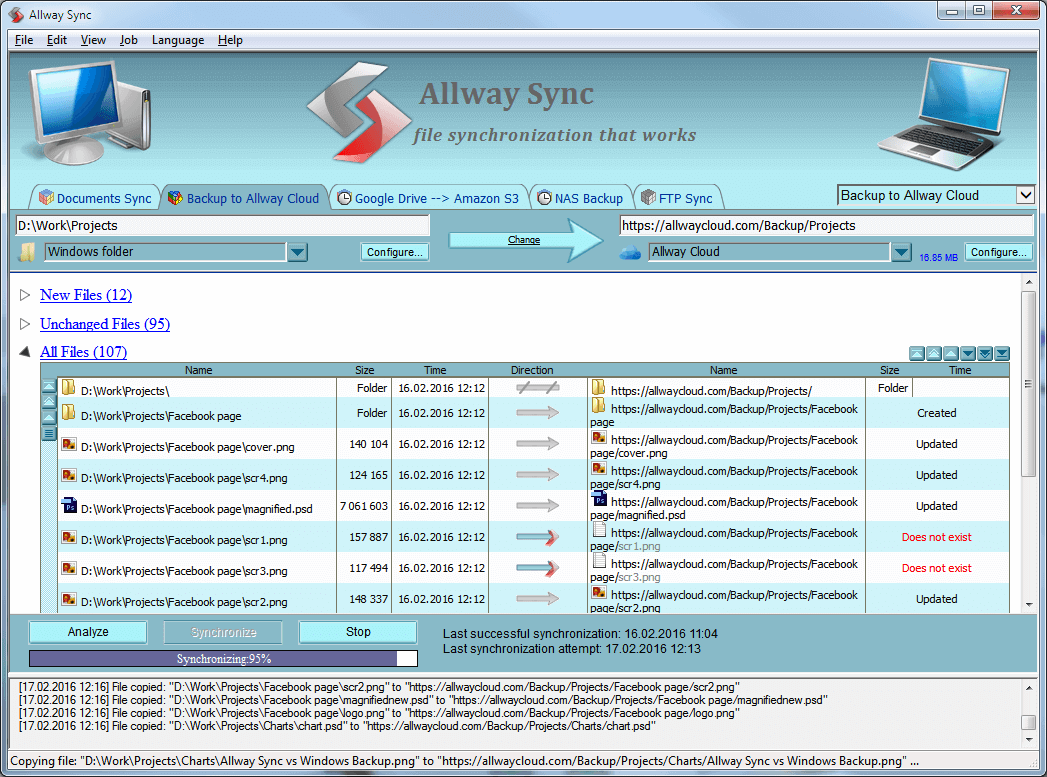Unveiling the Power of File Synchronization Software for Enterprises
File synchronization software for enterprises sets the stage for this enthralling narrative, offering readers a glimpse into a story that is rich in detail with casual formal language style and brimming with originality from the outset.
As we delve deeper into the realm of file synchronization software, a world of seamless data consistency and enhanced productivity unfolds before us.
Introduction to File Synchronization Software for Enterprises
File synchronization software is a crucial tool for enterprises to ensure seamless data management across various devices. This software allows organizations to synchronize files and folders in real-time, ensuring that employees have access to the most up-to-date information regardless of their location or the device they are using.
Importance of File Synchronization Software
- Ensures Data Consistency: File synchronization software helps maintain data consistency by automatically updating changes made to files across all connected devices.
- Enhances Collaboration: By enabling employees to access and work on the same files simultaneously, this software fosters collaboration and increases productivity within the organization.
- Improves Data Security: With file synchronization software, enterprises can set access permissions and encryption protocols to secure sensitive information and prevent data breaches.
- Streamlines Workflows: By automating file updates and transfers, this software streamlines workflows and reduces the risk of errors caused by manual data synchronization.
Key Features of File Synchronization Software

File synchronization software is crucial for enterprises to ensure seamless collaboration and data consistency. When choosing a file synchronization tool, here are some key features to consider:
Real-Time Synchronization
Real-time synchronization allows files to be updated instantly across all connected devices as soon as changes are made. This ensures that all team members have access to the most recent version of files at all times, promoting efficient collaboration and decision-making.
Versioning
Versioning is a vital feature that enables users to track changes made to files over time. With versioning, users can revert to previous versions of files if needed, preventing accidental data loss or errors. This feature is especially important for enterprises dealing with sensitive or critical data.
Factors to Consider When Choosing File Synchronization Software
When selecting file synchronization software for enterprises, there are several key factors to take into consideration to ensure the chosen solution aligns with the organization's needs and goals.
Cloud-based vs. On-premise Solutions
- Cloud-based file synchronization solutions offer the advantage of accessibility from anywhere with an internet connection, making it ideal for remote teams or employees working off-site.
- On-premise solutions, on the other hand, provide greater control over data security and compliance, as all data is stored within the company's own infrastructure.
- Consider the organization's specific requirements, such as data privacy regulations or the need for real-time collaboration, to determine which type of solution best suits the business.
Security Considerations
- Security is a crucial factor when choosing file synchronization software, especially for enterprises handling sensitive or confidential data.
- Look for features like end-to-end encryption, multi-factor authentication, and data loss prevention to ensure the protection of data during transmission and storage.
- Consider the vendor's security certifications, compliance with industry standards, and track record in handling security incidents when evaluating different software options.
Scalability Requirements
- Scalability is essential for enterprises that anticipate future growth or changes in data volume.
- Choose a file synchronization software that can scale with the organization's needs, whether it's adding more users, expanding storage capacity, or integrating with other systems.
- Consider factors like the software's performance under heavy workloads, its ability to support multiple devices and platforms, and the ease of adding new features or functionality as the business evolves.
Implementation and Integration of File Synchronization Software
Implementing and integrating file synchronization software in an enterprise environment requires careful planning and execution to ensure seamless operation and maximum efficiency.
Step-by-Step Guide on Implementing File Synchronization Software
- Assess the current file storage and sharing needs of the organization.
- Choose a file synchronization software solution that aligns with the organization's requirements and budget.
- Install the software on all relevant devices and servers within the enterprise network.
- Configure the software settings to enable synchronization across all devices and users.
- Set up user permissions and access levels to ensure data security and compliance.
- Monitor the synchronization process regularly to address any issues or conflicts that may arise.
Importance of Seamless Integration with Existing Enterprise Systems
Seamless integration with existing enterprise systems is crucial for file synchronization software to function effectively and efficiently. Integration ensures that all data is synchronized across different platforms and devices, allowing employees to access and collaborate on files seamlessly.
Best Practices for Training Employees on Using File Synchronization Software
- Provide comprehensive training sessions on how to use the file synchronization software effectively.
- Offer hands-on practice sessions to allow employees to familiarize themselves with the software.
- Create user manuals and guides for reference to help employees troubleshoot common issues.
- Encourage employees to ask questions and seek assistance when needed to ensure smooth adoption of the software.
Case Studies

File synchronization software has proven to be a valuable tool for enterprises looking to improve collaboration and productivity. Let's explore some case studies of successful implementation of file synchronization software.
Company A: Increased Efficiency
- Company A, a multinational corporation, implemented file synchronization software to streamline communication and document sharing among its global teams.
- Challenges faced during implementation included resistance to change and data security concerns.
- By providing comprehensive training and ensuring data encryption, Company A overcame these challenges successfully.
- Specific use cases where file synchronization software improved productivity included real-time updates on project files and seamless collaboration on shared documents.
Company B: Enhanced Collaboration
- Company B, a medium-sized business, integrated file synchronization software to enhance collaboration between remote teams and departments.
- During implementation, issues such as data duplication and version control were identified and addressed through proper configuration and user training.
- File synchronization software enabled Company B to have a centralized repository for all files, leading to improved access and collaboration across the organization.
Wrap-Up
In conclusion, the journey through the realm of file synchronization software for enterprises has unveiled a powerful tool that revolutionizes data management and operational efficiency. Embrace this technology and witness your enterprise soar to new heights of success.